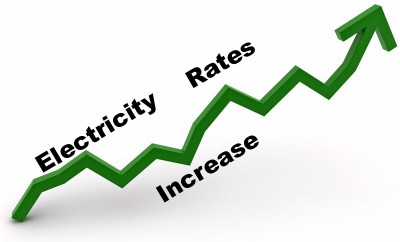
****
With the Coalition’s review of the insanely expensive and utterly ineffective Renewable Energy Target (ineffective if the object was meant to be reducing CO2 emissions in the electricity sector) headed up by a team of hard-nosed economic rationalists, ready to take an axe to most ludicrous energy policy ever devised, the wind industry and its parasites have been spinning tall tales about the wonders of wind power with an earnestness not seen before.
They’ve recently trotted out “studies” by their pet consultants – like Schneider Electric and SKM that have made $millions working for wind power developers and stand to lose out on much, much more if the RET is scaled back or scrapped – making the usual wild and unsubstantiated claims about the thousands of “green” jobs that the wind industry has generated (try a few hundred, Australia wide – and most of those fleeting construction jobs); about wind power’s tremendous contribution to CO2 emissions reduction; and, last but not least, the fantastic claim that wind power REDUCES power prices. No, we’re not kidding.
The falling power price furphy must come straight from the same wind industry “play-book” used by wind weasels the World over – because it seems to pop up everywhere lately. Trouble is – it’s a complete fiction.
The places where giant fans have sprouted like mushrooms have all seen retail power prices skyrocket faster than those without.
Denmark, with more turbines per capita than anywhere in the world has seen power bills triple in the past 20 years. Germans – who have slung up thousands of giant fans in the last decade or so – have been belted with power bills that have increased by more than 80% since 2000. And Australia’s “wind power capital”, South Australia jockeys with Denmark and Germany for the “honour” of having the highest power prices in the World (see page 11 of this paper: FINAL-INTERNATIONAL-PRICE-COMPARISON-FOR-PUBLIC-RELEASE-19-MARCH-2012 – the figures are from 2011 and SA has seen prices jump since then).
And it’s not just South Australians, the Danes and the Germans facing escalating power bills thanks to wind power. In the USA a number of States have been madly slinging up giant fans – with the inevitable consequence of spiralling electricity prices. Funny about that.
Here’s a report by James Taylor that slams US wind industry claims about wind power reducing power prices.
Wind Industry Study Shows Electricity Prices Skyrocketing In Wind Power States
Forbes.com
James M. Taylor
27 February 2014
A newly published paper by the American Wind Energy Association shows electricity prices are rising more than four times as fast as the national average in nine of the 11 states with the most wind power consumption. In Texas, the only one of the 11 states with significantly declining electricity prices, deregulation, not wind power, is causing the decline in electricity prices.
The findings are a huge blow to advocates of renewable power mandates and wind power subsidies.
Playing Defense on Rising Prices
Susan Williams Sloan, director of state relations for the American Wind Energy Association (AWEA), wrote and circulated an article in response to a series of articles I wrote on electricity prices in states with renewable power mandates. Last year, legislators in Colorado, Kansas, and Ohio asked me to testify in legislative hearings about the cost impacts of renewable power mandates in their states. Legislators in another state, North Carolina, asked me to prepare a similar analysis for potential legislative hearings. My research found electricity prices in all four states rose much more rapidly than the national average after the states enacted their renewable power mandates.
My articles, published in Environment & Climate News, documented the rapid price increases in each state, which come as no surprise considering wind power and other forms of renewable power generation are much more costly than conventional power. Indeed, that is why Big Renewables fight tooth and nail for renewable power mandates — because they cannot compete with conventional power sources on a level playing field.
In “Fact Check: New Analysis Rebuts Heartland’s Bogus RPS Claims,” Sloan claimed that in the 11 states in which wind power accounts for more than 7 percent of electricity sales, prices dropped by a little less than 1 percent since 2008. Sloan, referencing another recently published AWEA article, “Wind Power’s Consumer Benefits,” claimed electricity prices in the remaining 39 states rose 7.8 percent. For the nation as a whole, she stated, electricity prices rose 3 percent since 2008.
Sloan claimed this proved my four state-specific electricity studies were “cherry-picked” and “bogus.” Instead, an objective review of Sloan’s self-serving “fact check” provides an informative lesson in how the renewable energy industry plays fast and loose with the facts to deceive federal and state legislators. AWEA’s own analysis actually shows electricity prices are skyrocketing in almost all states with substantial wind power generation.
Skyrocketing Costs in Wind Power States
The 11 states that AWEA identifies as deriving more than 7 percent of their electricity from wind power are Colorado, Idaho, Iowa, Kansas, Minnesota, North Dakota, Oklahoma, Oregon, South Dakota, Texas, and Wyoming. AWEA says these 11 states have had slightly falling electricity prices since 2008, but official U.S. Energy Information Administration (EIA) data show nine of the 11 have dramatically rising prices. Here are EIA’s data on changes in electricity prices for each of the 11 states since 2008:
Colorado – up 14%
Idaho – up 33%
Iowa – up 17%
Kansas – up 29%
Minnesota – up 22%
North Dakota – up 24%
Oklahoma – down 1%
Oregon – up 15%
South Dakota – up 26%
Texas – down 19%
Wyoming – up 33%
The objective U.S. Energy Information Administration data show nine of the 11 largest wind power states are experiencing skyrocketing electricity prices, rising more than four times the national average. Moreover, prices in eight of the 11 states are rising more than twice as fast as in the 39 states with less than 7 percent wind power generation.
How, then, does AWEA claim these 11 largest wind power states are experiencing declining electricity prices?
The answer is AWEA does not calculate each of the 11 states’ average rise or decline in electricity prices and then divide by 11. Instead, AWEA assigns differing weights to each state’s rise or decline based on how much electricity is consumed in that state. AWEA’s curious way of assigning different weight to each state’s electricity prices gives it the convenient ability to claim that wind power lowers electricity prices, even though electricity prices are skyrocketing in nine of the 11 states with the most wind power consumptions.
The Two Outliers Explained
Other important factors further rebut AWEA’s claims in the two heavy wind power states where electricity prices are not skyrocketing.
In Oklahoma, where electricity prices remained essentially flat, there is no renewable power mandate. To the extent wind power is produced in Oklahoma, market forces, rather than state government, determine its generation. AWEA curiously argues relatively stable electricity prices in a state without renewable power mandates justify AWEA’s call for renewable power mandates.
In Texas, economists agree, electricity prices have been falling in recent years as a result of the state’s deregulation efforts during the past decade. Texas coal power, natural gas power, nuclear power, and wind power are all experiencing declining prices due to deregulation. Yet AWEA falsely ascribes the state’s declining electricity prices to wind power.
AWEA’s self-serving formula uses Texas’ deregulation to hide the cumulatively skyrocketing electricity prices in the 10 other states that generate the most wind power.
AWEA Shoots Self in Foot
In its attempt to rebut the common-sense, objectively documented fact that forcing people to purchase electricity from expensive sources raises electricity prices, AWEA merely shot itself in the foot regarding its bogus economic claims. AWEA also put state legislators on notice to be very careful regarding any self-serving claims AWEA might present in the future. Thank you for making my point for me, AWEA!
James M. Taylor is managing editor of Environment & Climate News.
Forbes.com
Call us suspicious – but STT senses a common theme – spiralling power prices in Denmark, Germany, South Australia and now US States with any significant wind power capacity – is James Taylor on to something, perhaps?
Could it really be that a generation source that receives mandated taxpayer and power consumer subsidies, that guarantee prices 3-4 times that paid to conventional generators, is causing retail power prices to increase?
Is it faintly possible that that same generation source – which can only ever be delivered to the grid at crazy, random intervals; requires 100% of its capacity to be backed up 100% of the time with either spinning reserve held by base-load generators; or with insanely expensive fast-start-up Open Cycle Gas Turbines, which cost a fortune to run – might result in price spikes when it disappears for hours and days on end leaving grid managers no other option than to pay through the nose for peaking power to keep the lights on?
Never letting the facts and evidence in the way of a great story – just like their compatriots in the US – the Clean Energy Council are working overtime to turn night into day – and are now claiming that South Australia’s skyrocketing retail power prices have nothing at all to do with its insane rush into wind power.
Suspicious we may be, but as they say: “if it looks like a duck, swims like a duck, and quacks like a duck, then it’s probably a duck.”


WE have them here also, funnily enough with the same results, plus “smart meters” so they can vary the price of their “safe greenie and allegedly low cost” power when the wind do not blow??
How does the wind industry manage to spin the line that wind is making your electricity cheaper? The answer is simple it’s a case of oils ain’t oils, the wind weasels often repeated claims of wind providing cheaper wholesale electricity pool prices don’t mean a cheaper price to you the customer, because the additional cost of the wind industry RET subsidy is then added on top of the real price that you should be paying for your electricity. An article by By Steve Goreham originally published in Communities Digital News neatly explains how these same baseless claims about wind power are also being made in USA. Just substitute RET instead of PTC (Production Tax Credit) and the article could be describing the machinations of the wind scam in Australia:
The facts in this article prove beyond doubt that ‘lying’ is the dominant gene in the wind industry’s DNA. It is inexplicable that, for some, the higher their ‘educational’ qualifications, the more heavily they fall for the lies.
Rob Stokes, new Minister for the Environment in NSW is a typical victim and believer in the fantasy. Unless someone can get through to this ‘superior’ being that he’s been had, then NSW is in for a tough time. Pity those in Southern Tablelands of NSW as this guy ramps up his support for what he sees as the ACT’s ‘bold and innovative’ move to see them destroyed by wind farms and ruin his State’s economic base into the bargain.
The public record shows Stokes has fallen for every lie the Clean Energy Council has fed him. God help us all!